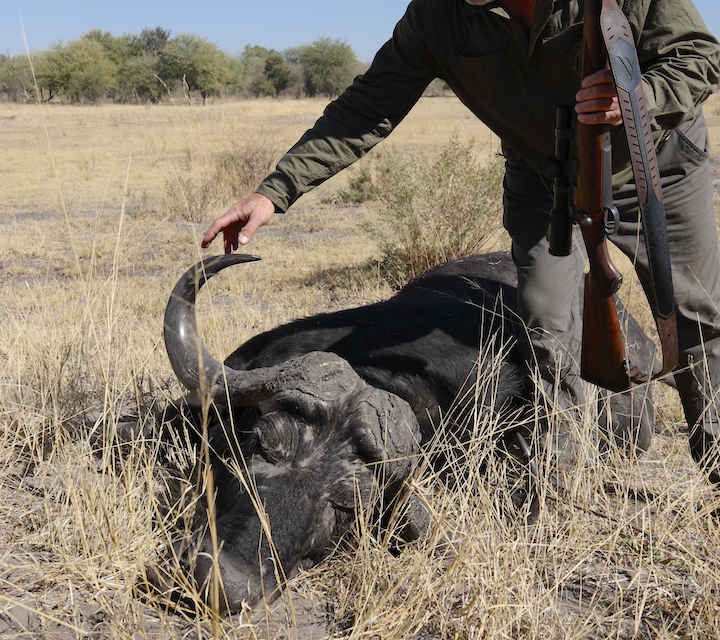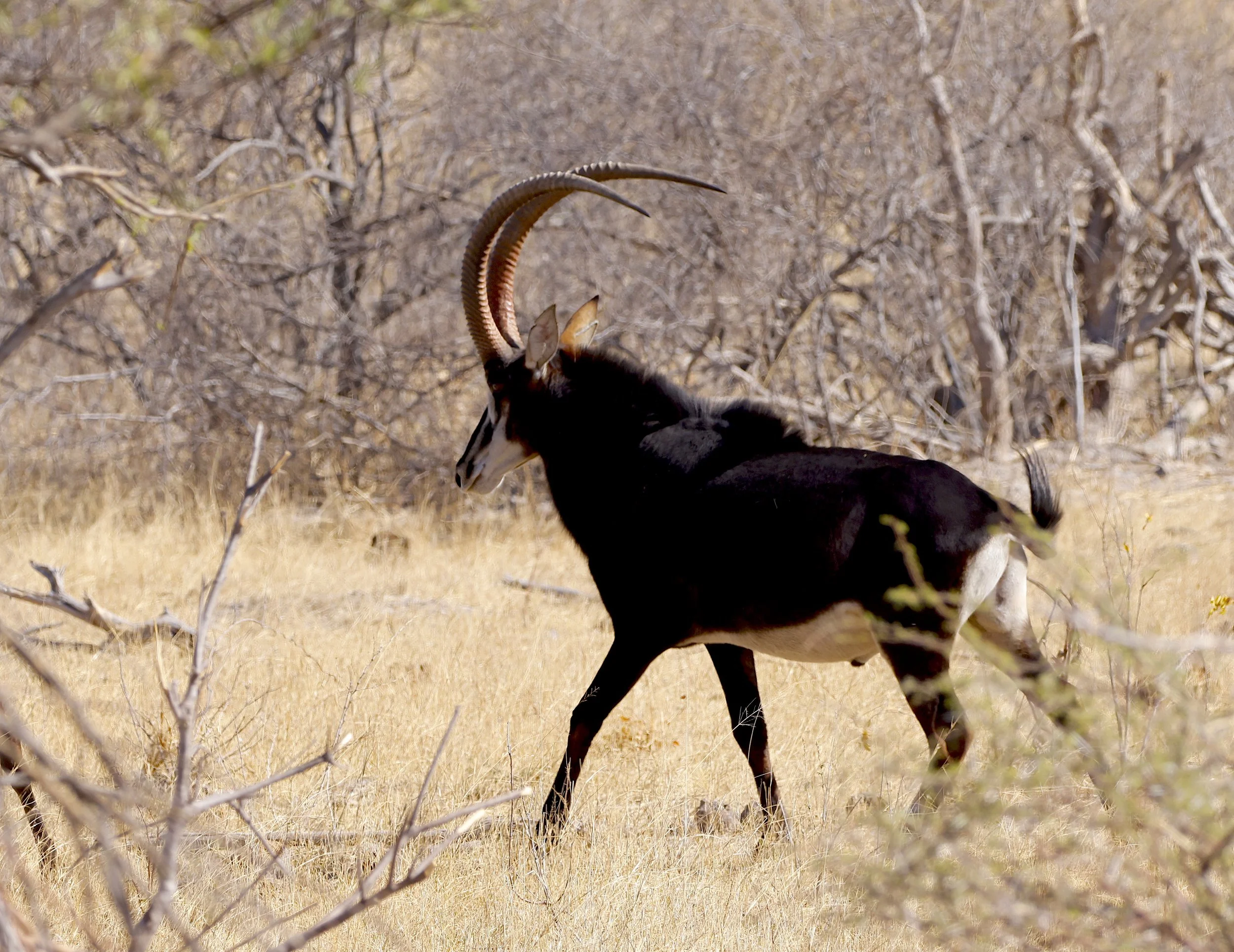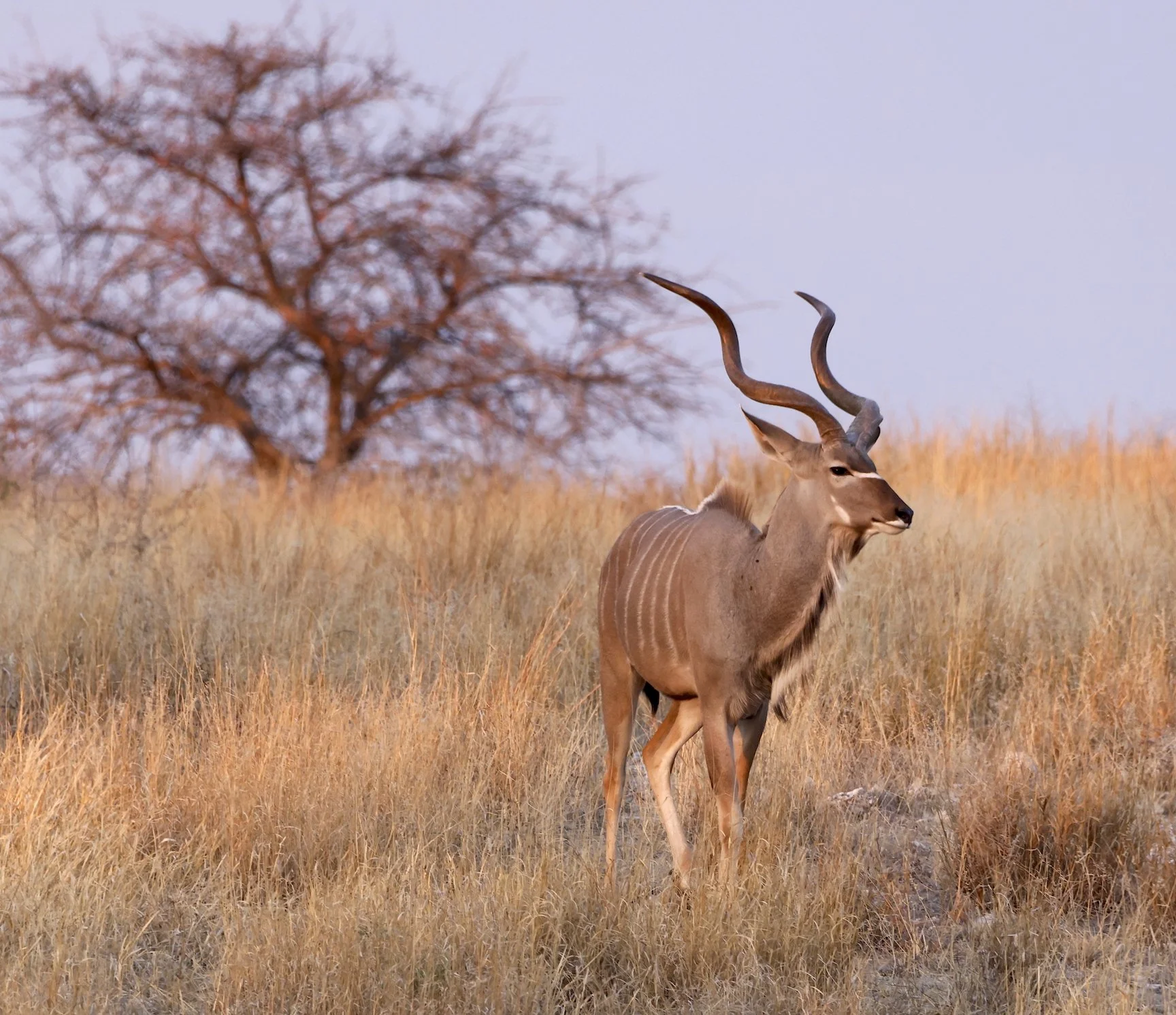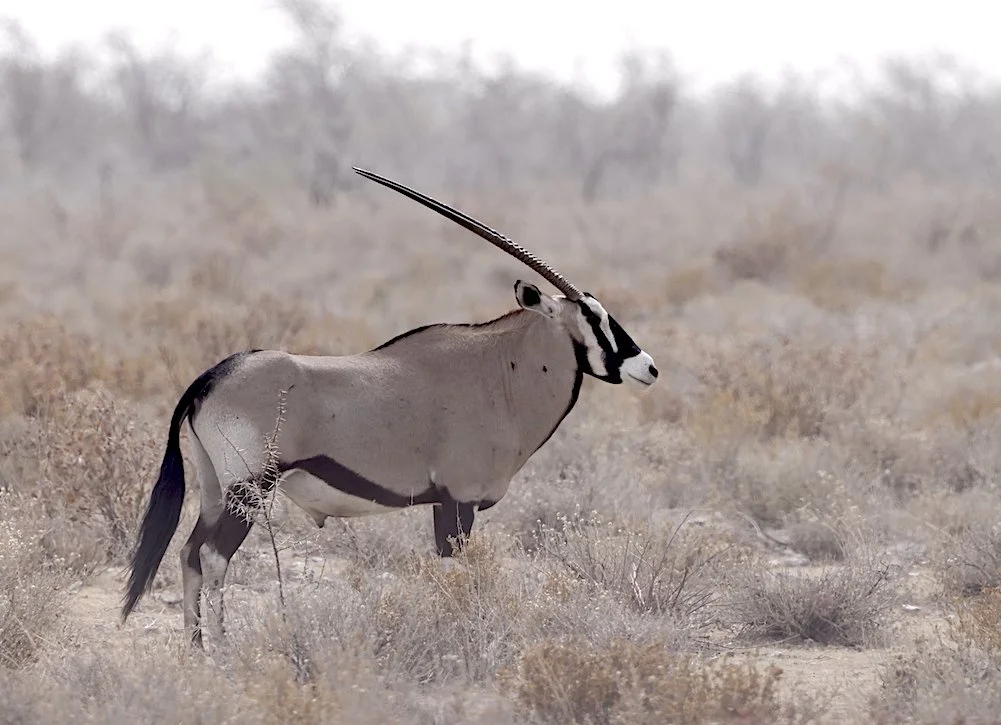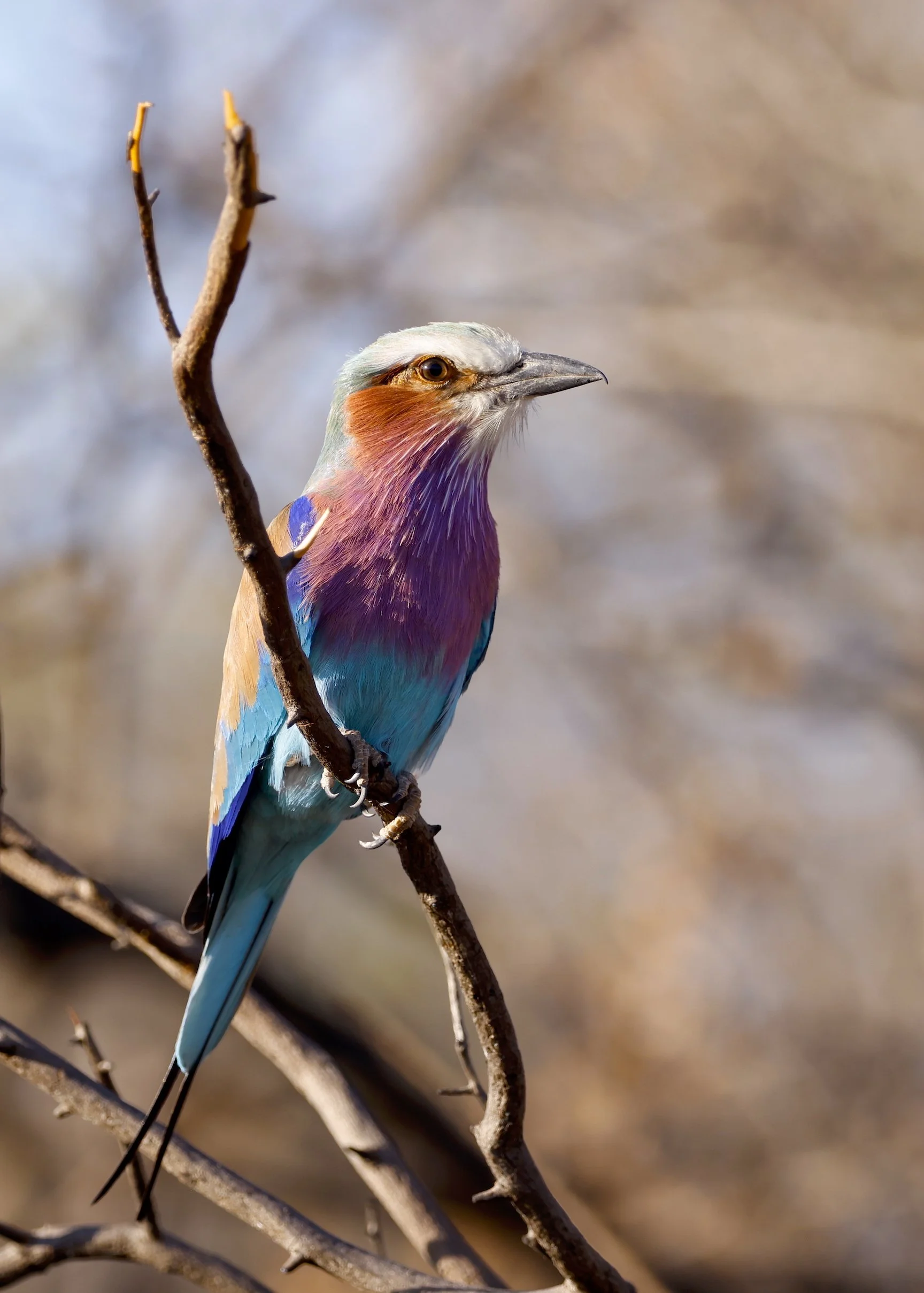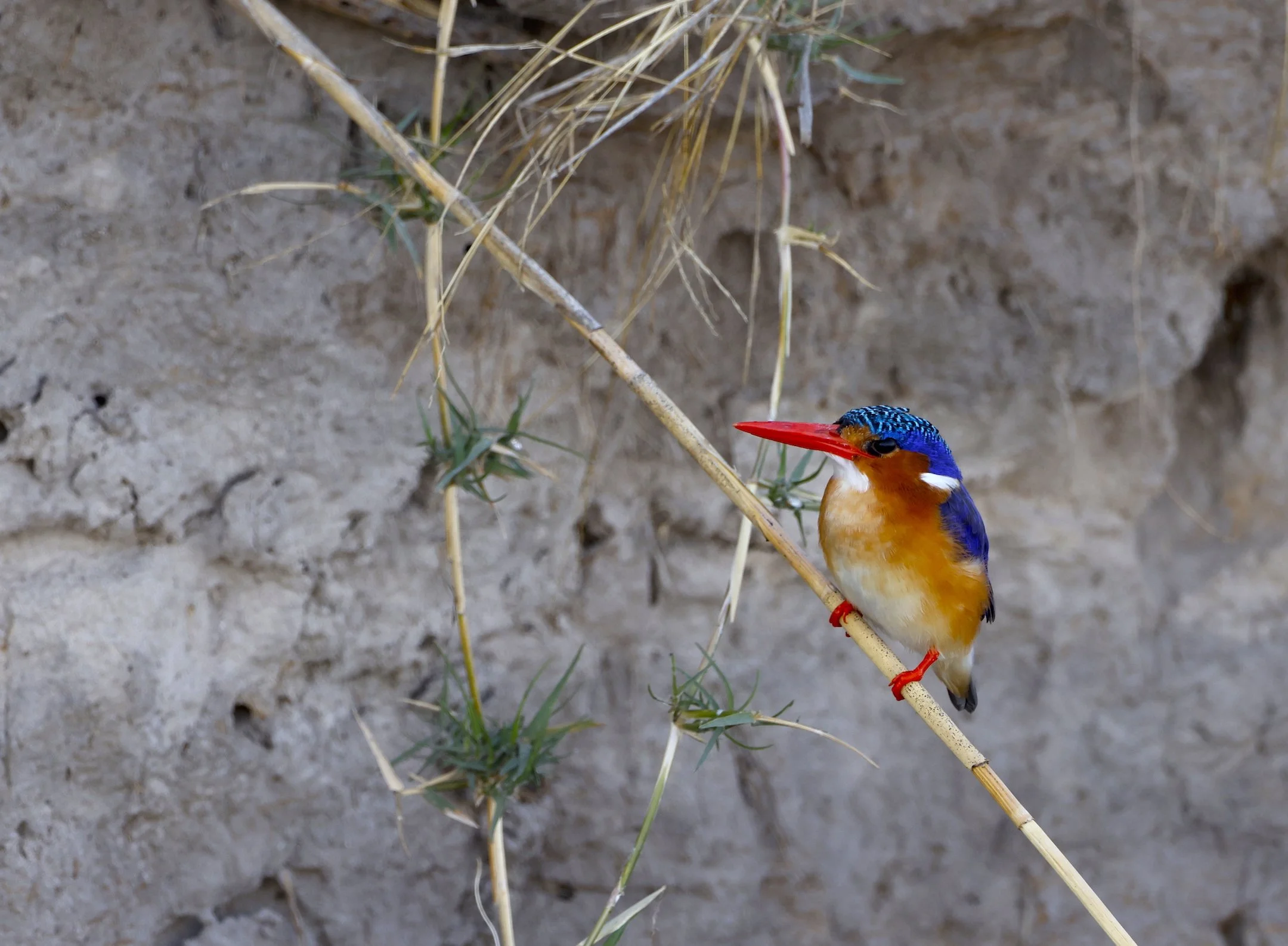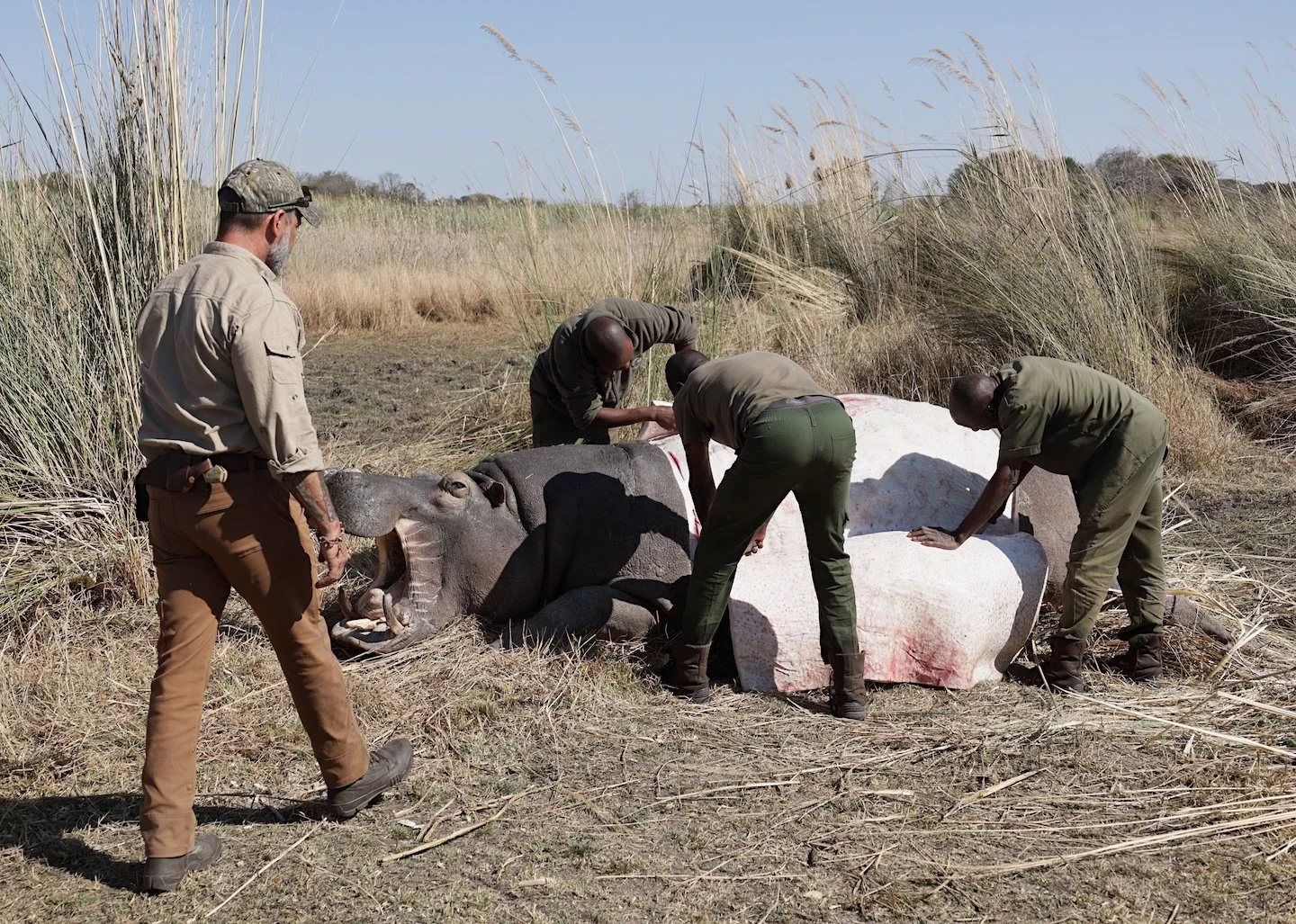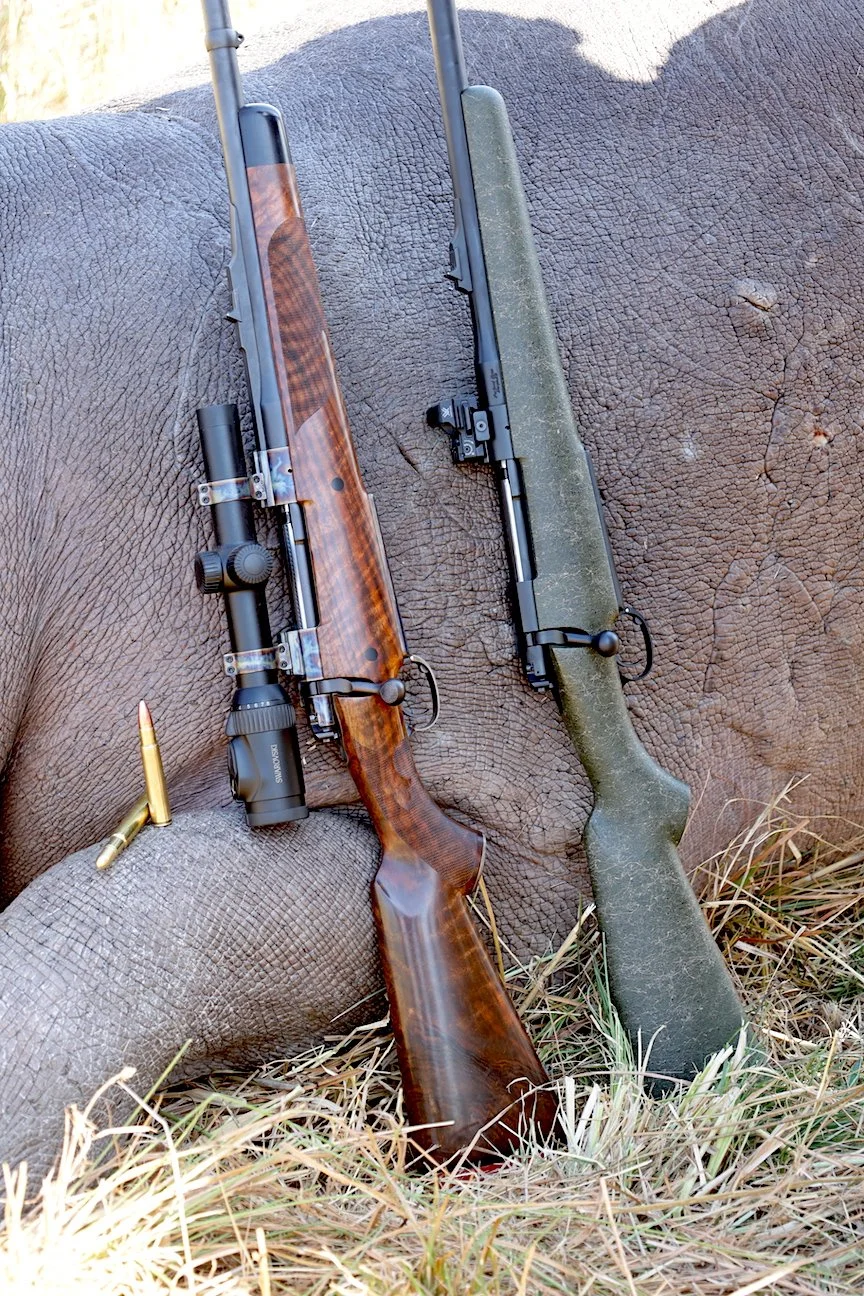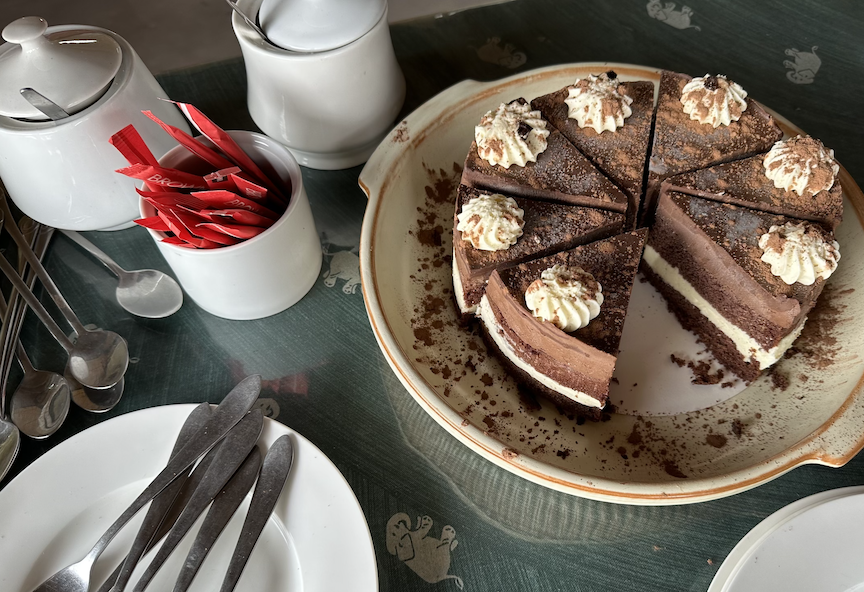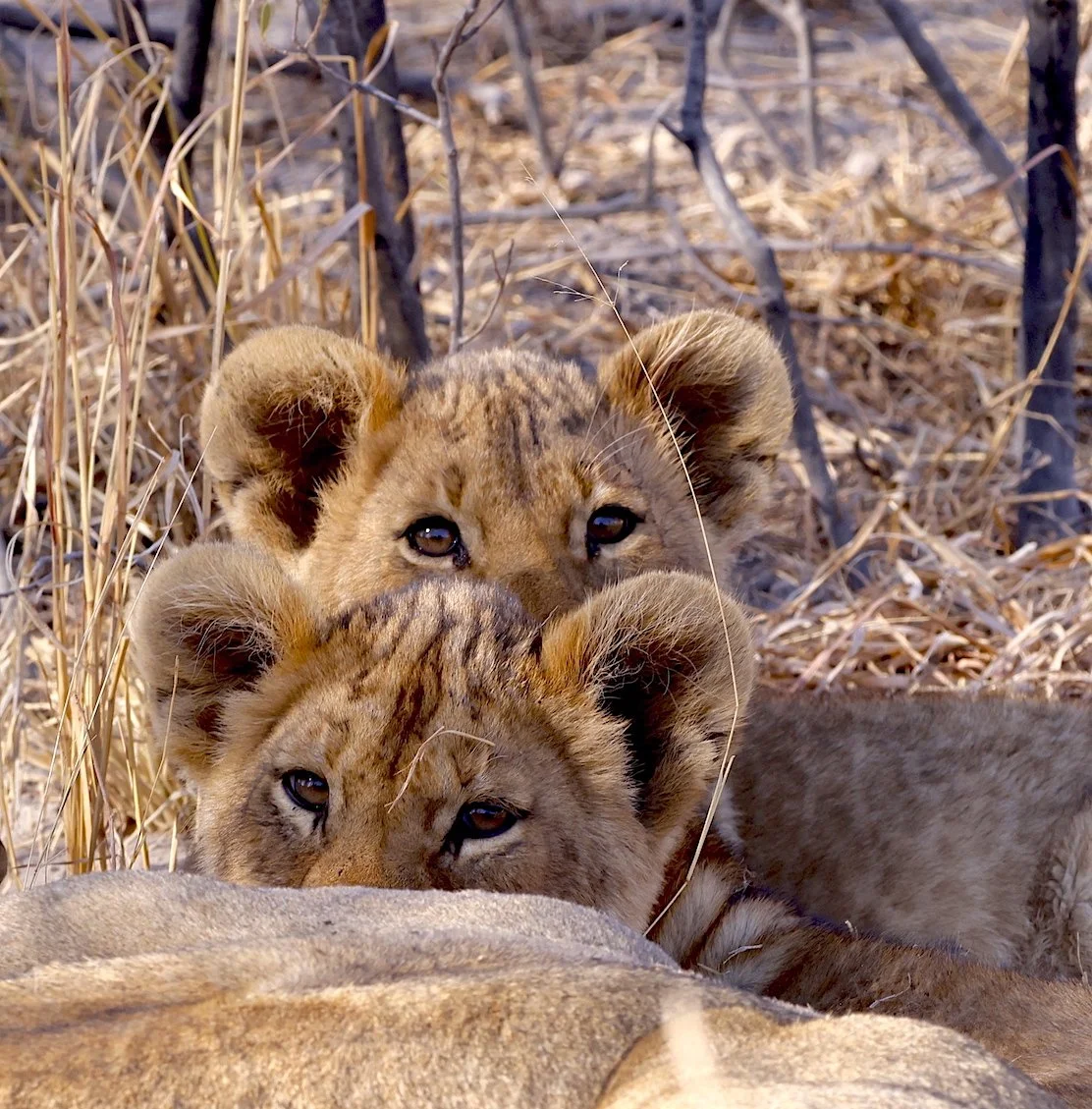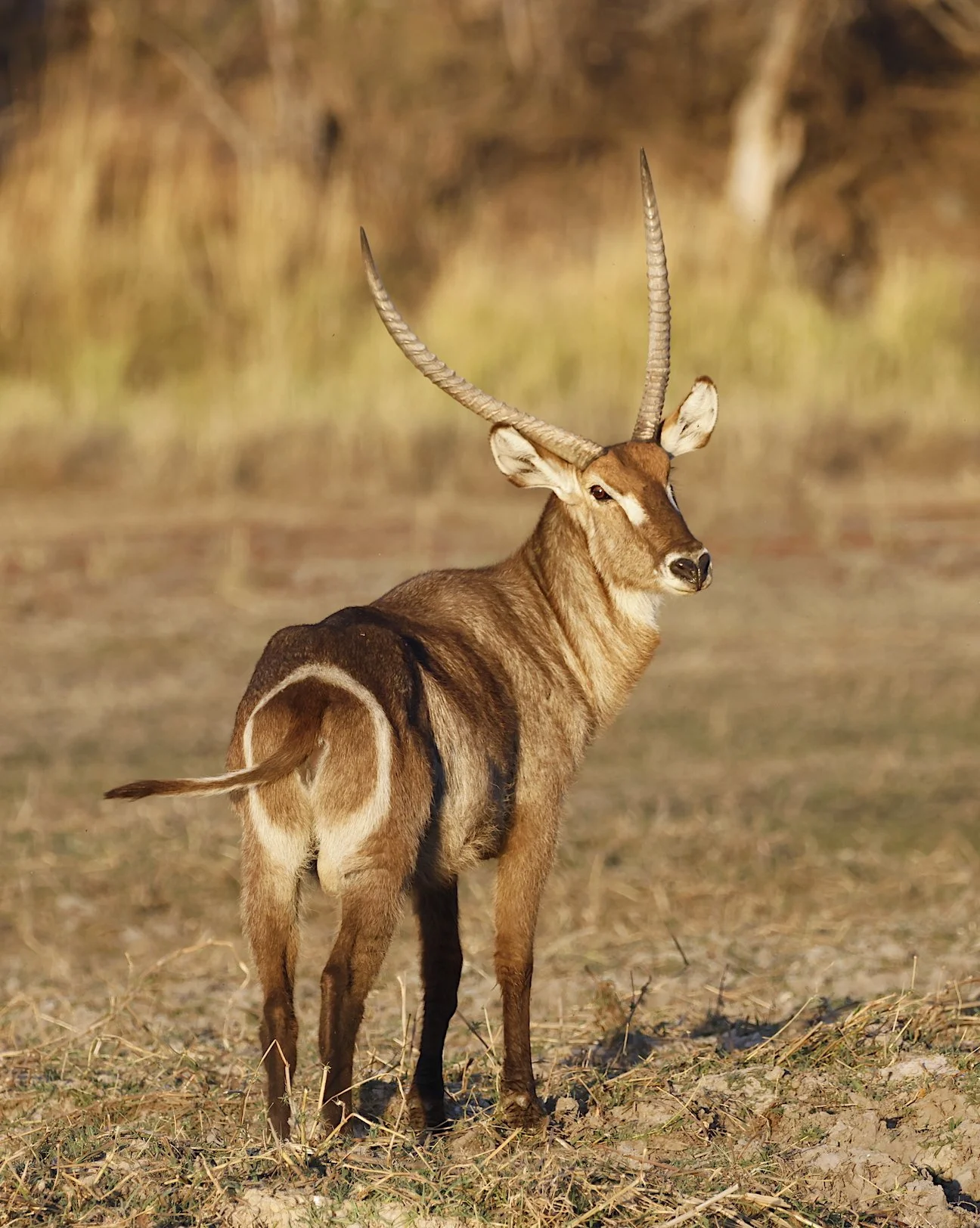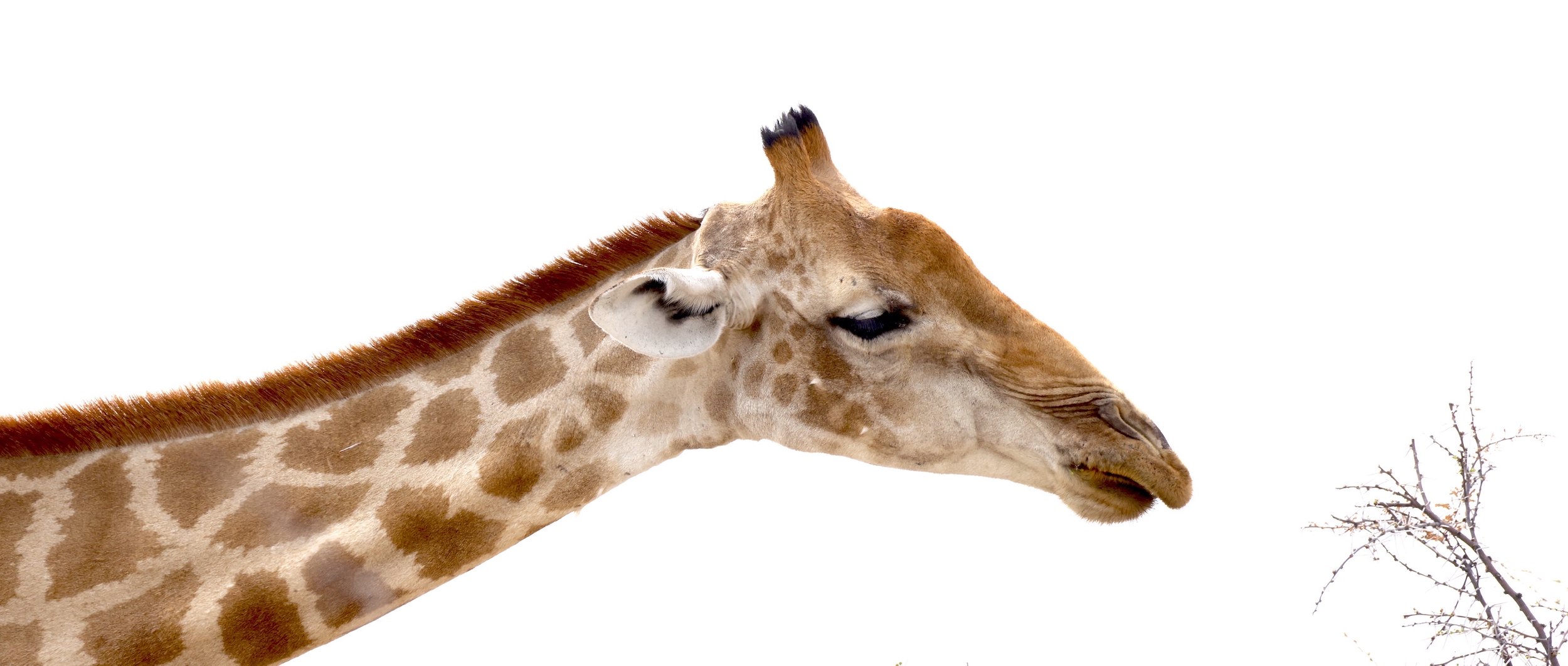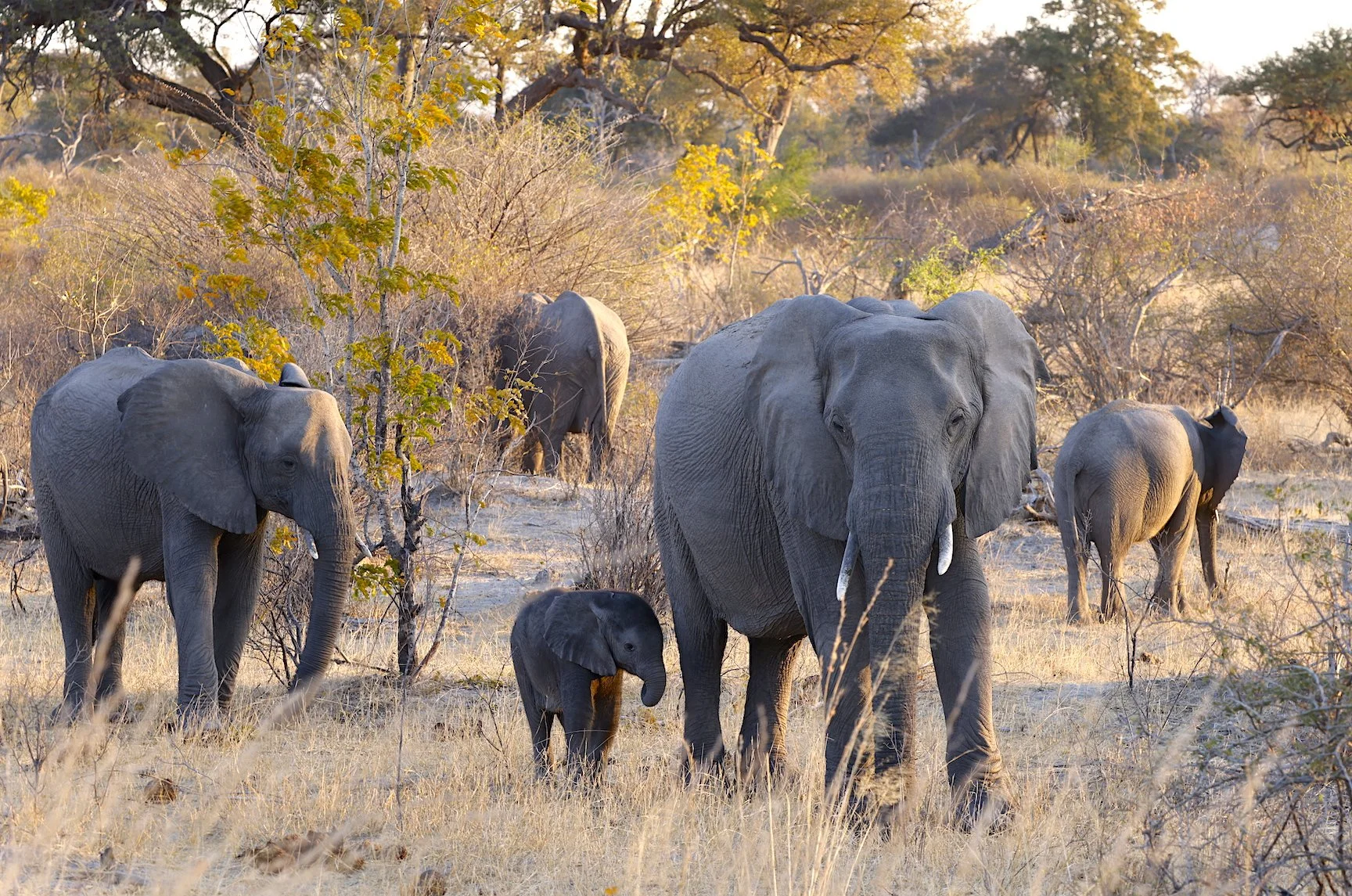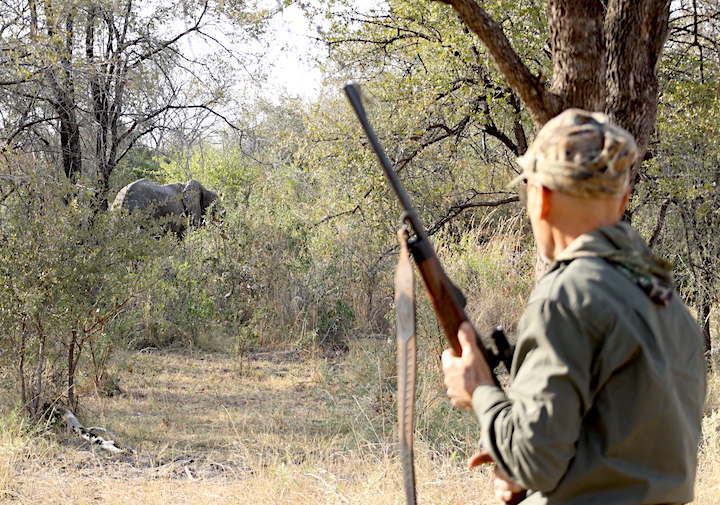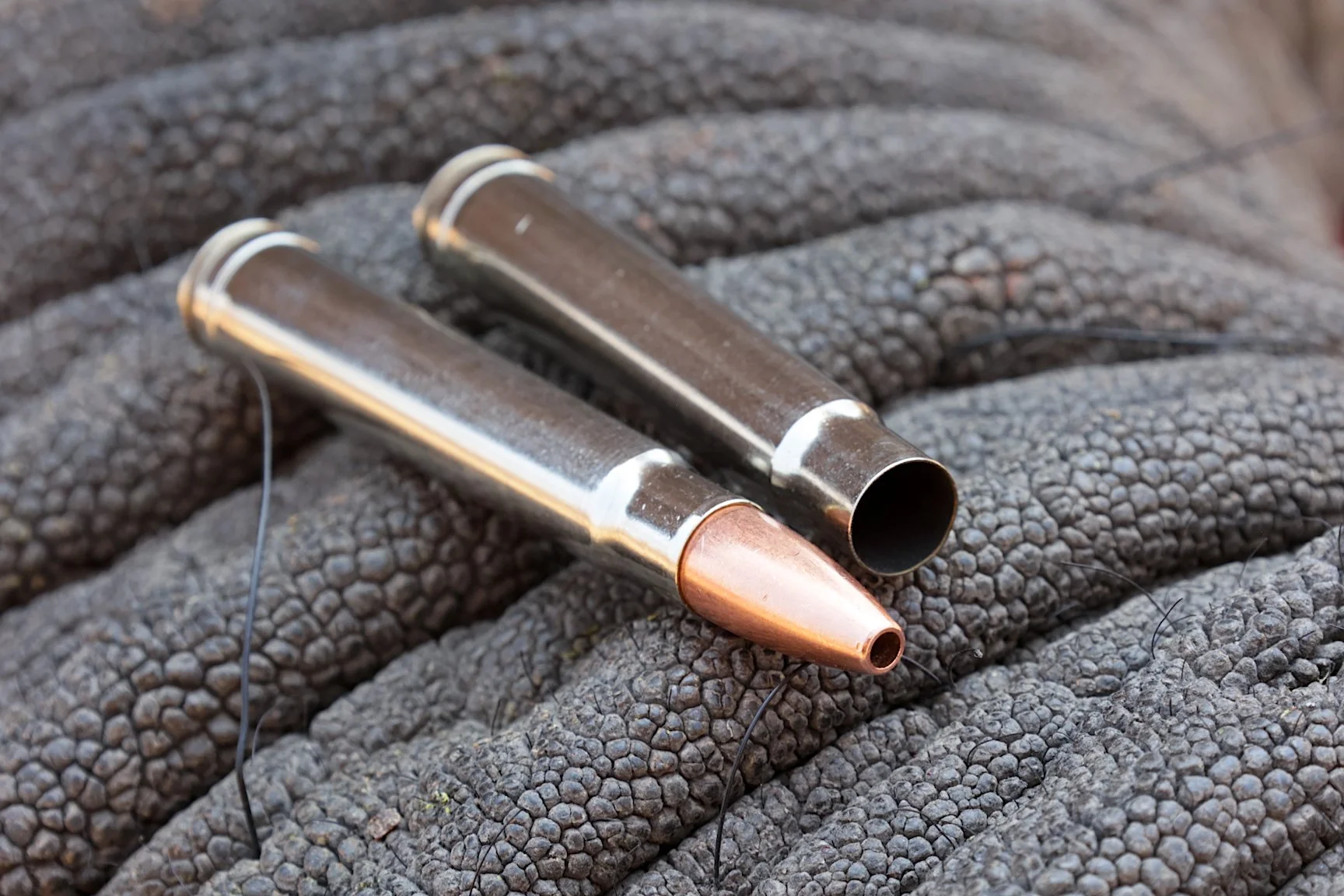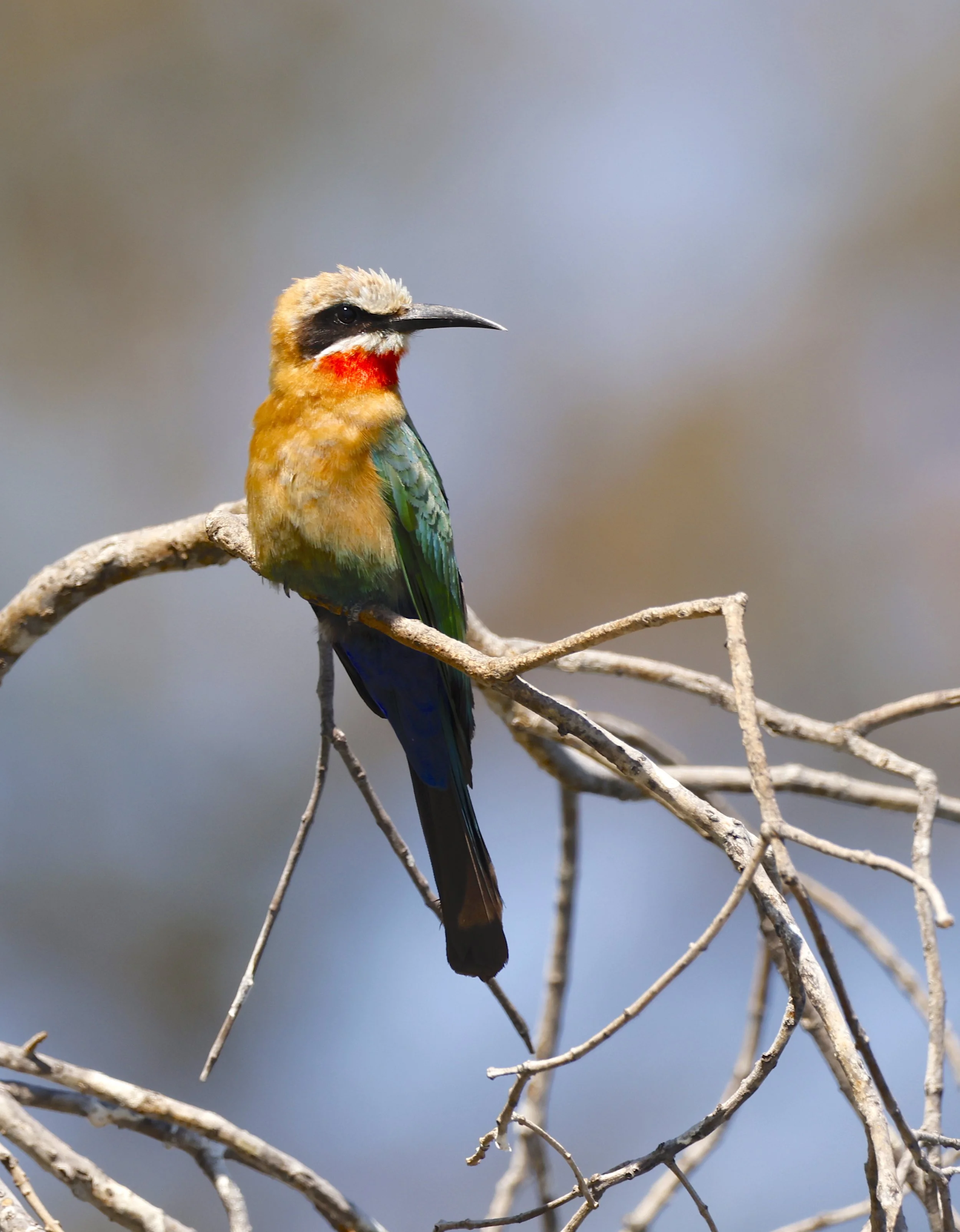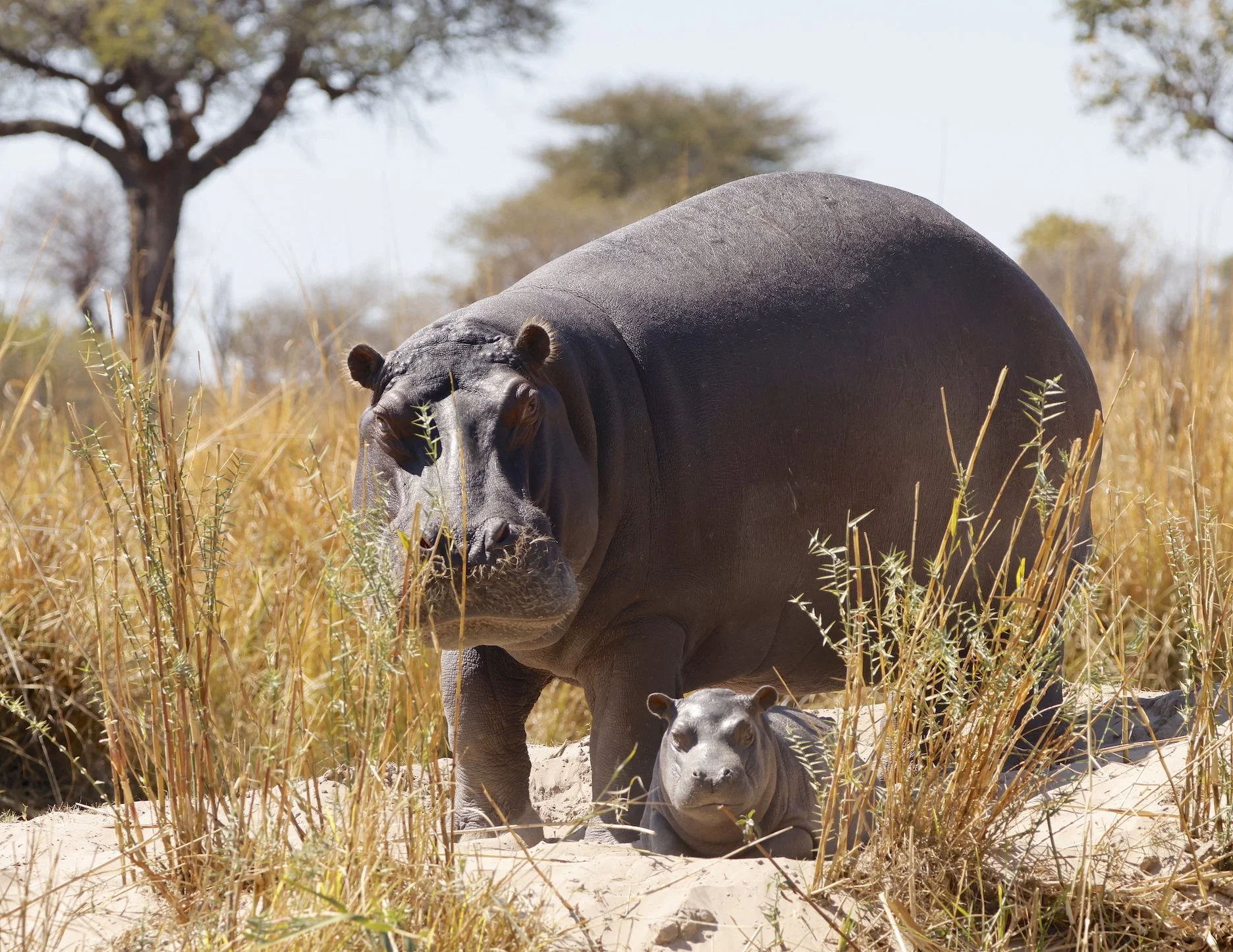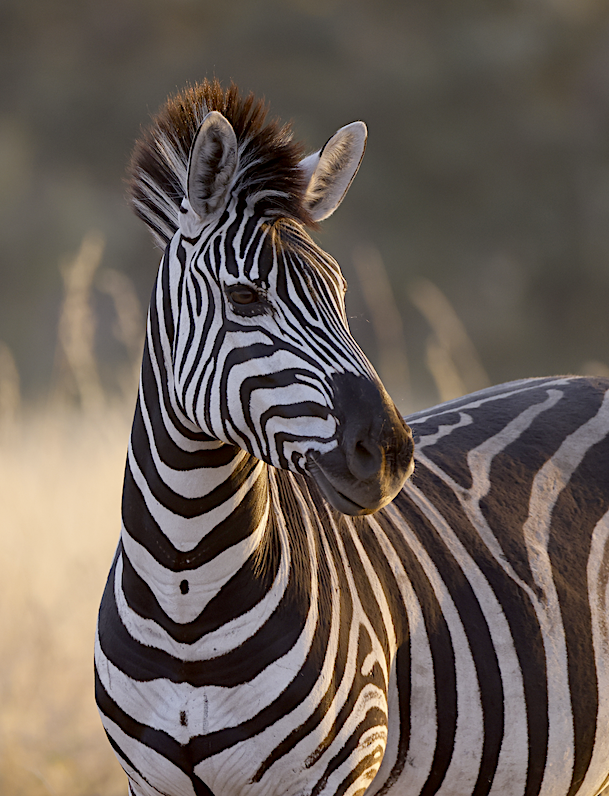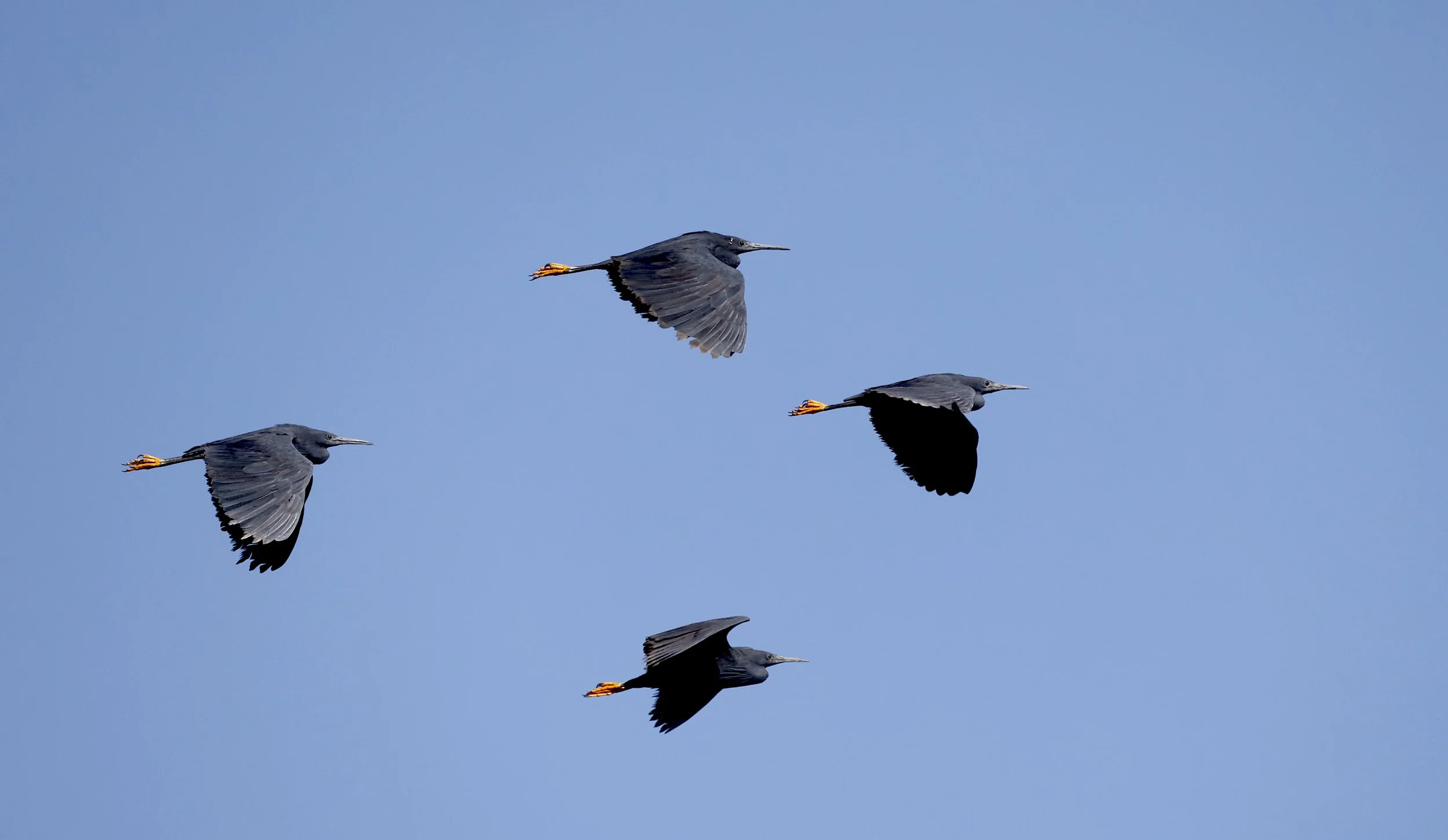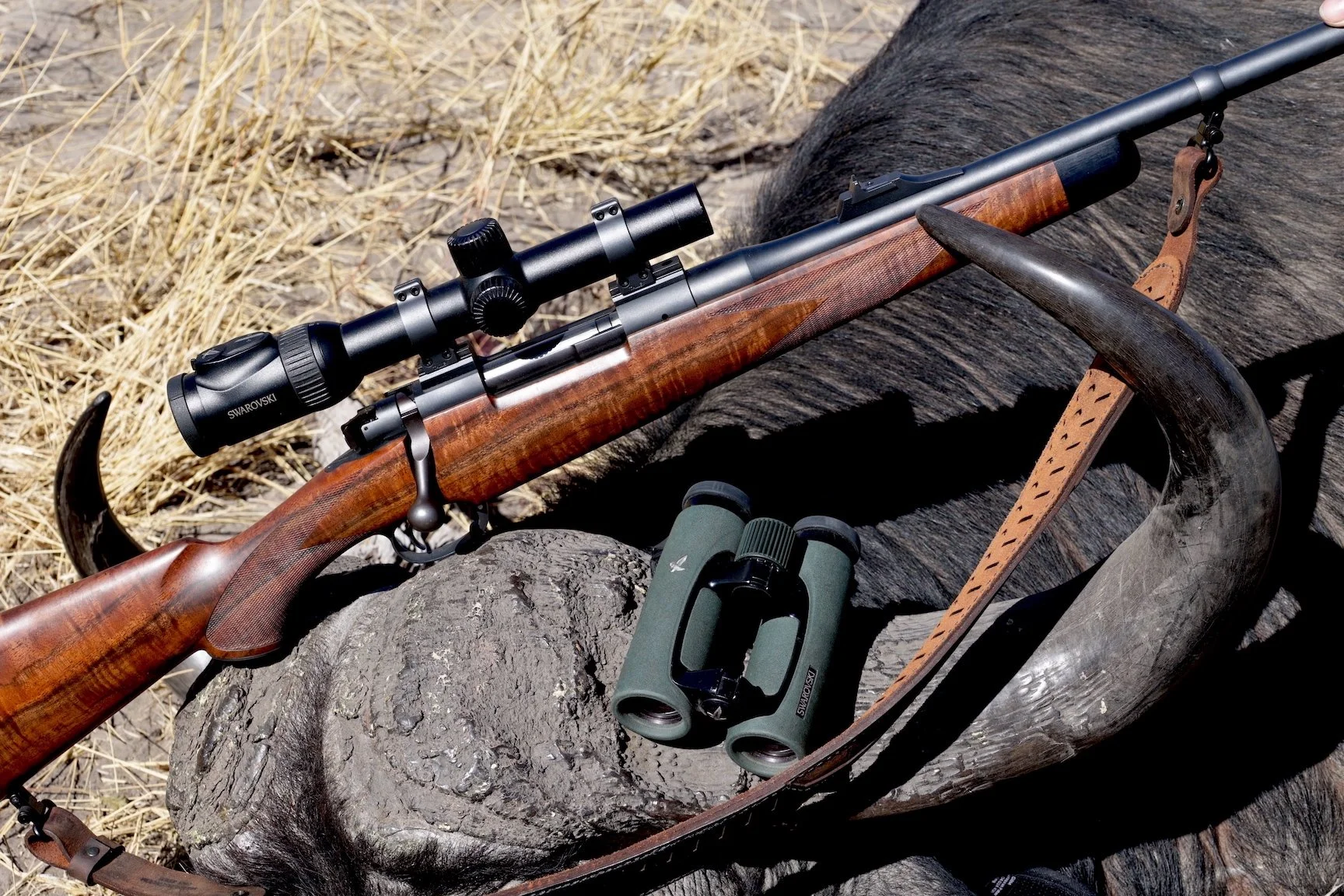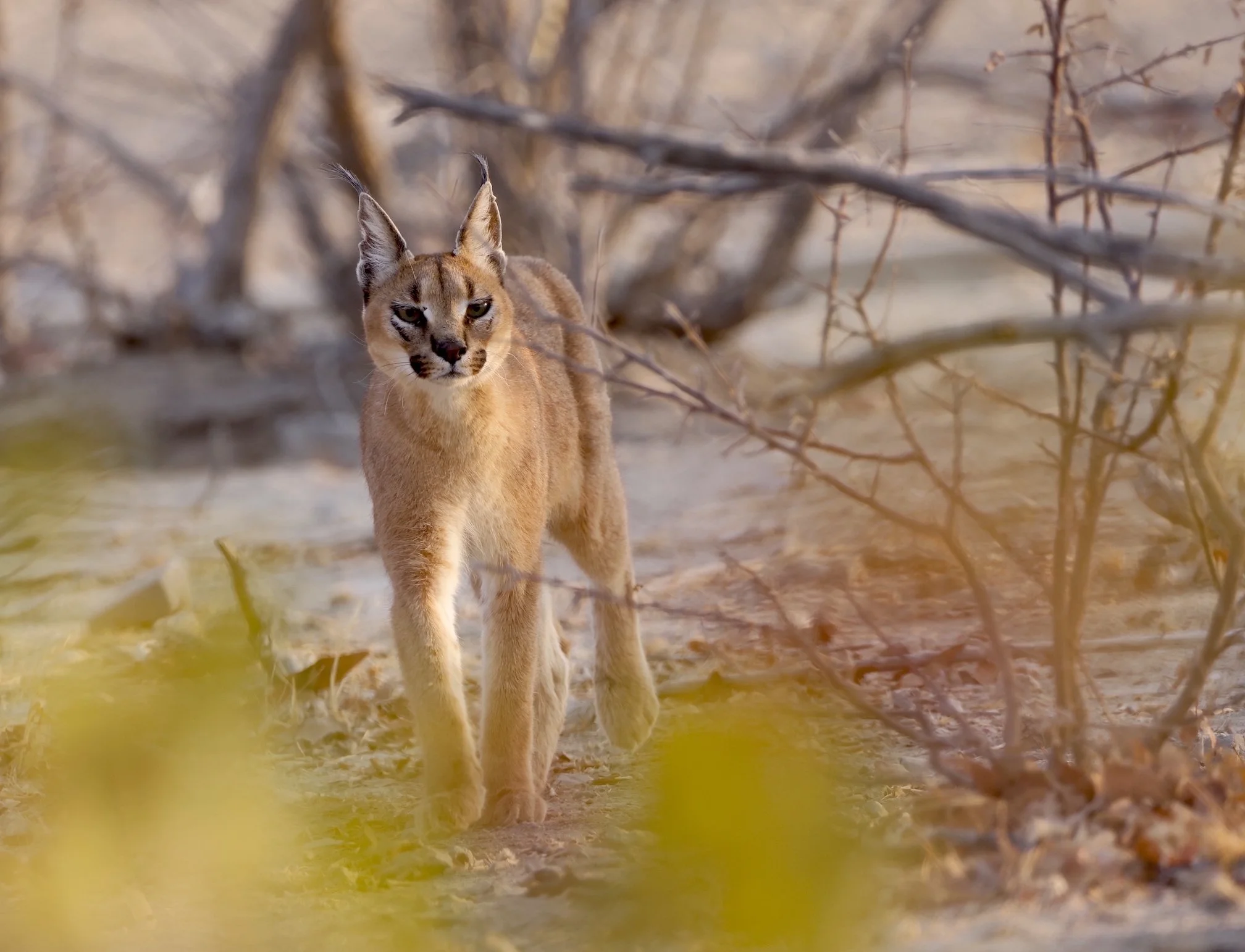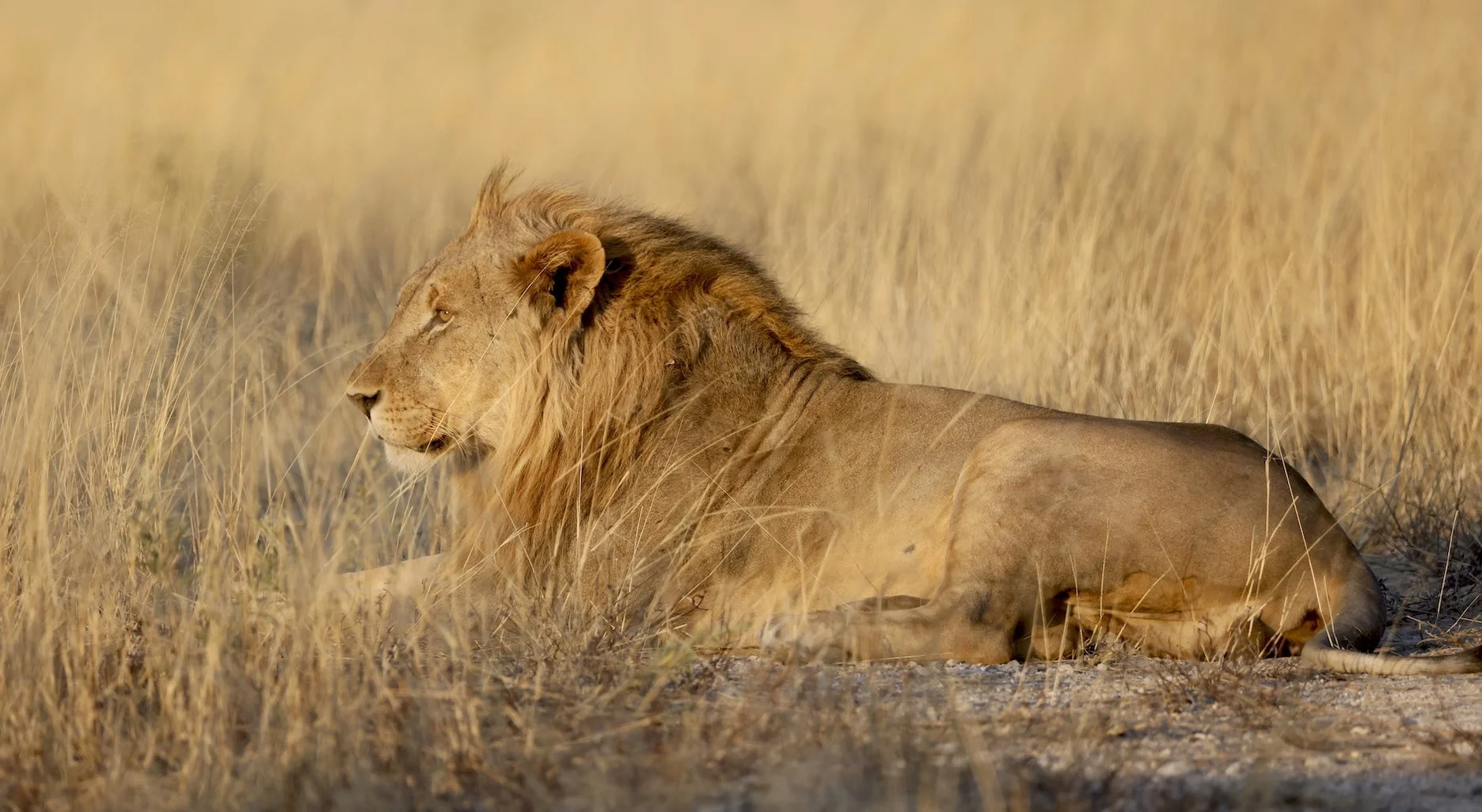Safari? Just Do It
David Muller’s Dagga Boy Safari camp reflects the class and comfort of an African hunting camp perfectly. Classic lodging, fine dining, nightly libations, and the kind of campfire that makes dreaming a reality.
Never mind the buffalo bull Doug shot. Forget the hippo bull Ray got. Don’t get overly excited about my bull elephant because the secret to the success of our recent Namibia safari was more than the sum of those grand hunts.
Any hunter should be able to imagine what Doug felt when he laid hands on his first Cape buffalo. To save $ and red-tape hassle, Doug borrowed my Parkwest Arms SD 76 controlled-round feed 375 H&H and 270-gr. Hammer Shock Hammer bullet handloads for his hunt. One shot behind the shoulder and this infamously tough buffalo loped 50 yards and fell dead.
First time safari hunters — and anyone contemplating a first such hunt in Africa — are, understandably, thinking about big animals, dangerous animals, abundant animals and the rich tradition of exotic hunting. You are dreaming, are you not, of spotting, stalking, and shooting a kudu with those incredibly towering, spiraling black horns; a sable with scimitar swords arcing over its back. An oryx carrying stiletto spears nearly four feet above its ears; a bull buffalo threatening stare from under its corrugated helmet; impala horns like ribbons flowing in the wake of a leaping ram.
A deep chested, black-maned sable bull carries the kind of ribbed scimitar horns that can make anyone feel the magic of African wildlife. Sectacular.
Refusing to be upstaged by the sable, a kudu grows dramatically spiraling horns that top off its striped hide and white-fringed mane. A big bull approaches the weight of a young bull elk. This is still a fairly young bull.
The oryx or gemsbuck rounds out the trio of Namibia’s most dramatically horned antelope, dressing up with black and white highlights to compliment its incredibly long, stiletto horns. The two black dots on this one’s neck are likely puncture wounds from old fights with competing bulls.
All of that is there for you, all of it contributing to the magic that is wild Africa. But the horns, the tusks, the striped and lined coats of two dozen big game species represent the tip of the African iceberg. Below the waterline, or more accurately under the vault of heaven, are scenes, sounds, smells and action that weave a pattern of discovery amazing to comprehend, even as it happens. It is magical, a familiar yet new world opening mysteries to every new explorer.
Namibia’s national bird, the lilac-breasted roller, is just one of the feathered gems that add sparkle and magic to a winter safari.
The diminutive pearl-spotted owlet can’t match the roller for dramatic plumage, but makes up for it with its nocturnal mystery. This one perched overhead within 20-feet of our nightly campfire, perhaps hoping the flames might attract a tasty moth or beetle.
The riverside malachite kingfisher compensates for being the smallest kingfisher in the area by being the most intensely colored. Birds such as this might be in cahoots with the region’s big game, distracting hunters’ attention so the big mammals can slip away unseen.
While Doug, Ray, I, and our wives — Barb, Katy, and Betsy — savored our hunts, we recognized that much of the pleasure and joy came from hearing the cries of fish eagles, the twittering of babblers, the grunting and bellowing of hippos splashing within a stone’s throw of our cabins. We soaked in the orange glow of sunsets framed in the open windows of the dining hall while master chef Lando spread the table with savoring buffalo steaks and elephant tidbits. Doug got the surprise of his life when he walked out of his cabin and nearly into the face of an elephant plucking leaves off the shade tree over the door.
Hippos were a steady source of audio and visual entertainment as close as 40 yards from our cabins and 10 yards from our stalks along the Kwando River banks.
David and Werner lead Ray on an evening search for a big hippo. With sunsets like this to brighten the evening, no one was disappointed when suitable game was not engaged.
Dagga Boy staff begin breaking down Ray’s bull hippo. Local villagers, for whom we were shooting, use every part of the animals. This includes hide, bones, and internal organs.Ray was allowed to claim the bull’s 12 fighting teeth and a small patch of hide to be made into a wallet.
Rifles and ammo are a standard topic of discussion in safari camps. These are Ray’s 416 Rigby in a Parkwest Arms SD 76 Dark Continent configuration with enhancements like case collored receiver and Talley scope rings, fine-line checkering, quarter-rib rear sight ramp, and hooded front sight. PH Werner von Seydlitz’s backup rifle was an older Dakota Professional Hunter in 450 Rigby shooting 500-grain solids. A Vorex red dot was Werner’s preferred sighting system.
And the campfires. Each evening our host, David Muller, would turn his Land Cruiser round the last bend in the sand track to reveal flames dancing in the firepit, drinks sparkling on the bench behind, the dining room aglow with the promise of yet another elaborate meal. All of it ours to enjoy without lifting a finger. Deluxe decadence.
Even lunches were an abundant affair thanks to the skillful ministrations of head chef Lando smiling politely in the background.
Following lunch and a welcome nap, Lando teased us with elaborate coffee breaks complete with impressive desserts.
The man, the chef, the legend — Lando! His friendly, helpful personality was the equal to his cooking. A talent like this is an essential part of a happy safari camp.
And then the stories. The jokes. The easy laughter. The tales, tall and short, of hunts gone and yet to come, of buffalo dying on boot toes, hippos swamping boats, clients demanding flush toilets in desert sands hours from camp. And then the sleep of the innocent interrupted by the braying of hippos, the distant roaring of lions, the frightening crunch of elephants returned to finish that shade tree over your thatch roof.
These cubs were not the lions we heard roaring, but their daddy could have been.
This little family group made it clear when we’d approached near enough. False charges and the potential for real ones are always a possibility when hunting in elephant country. One cow elephant adopted camp as her favorite dining spot, Lando chasing her off regularly.
Safari is more than hunting, more than fishing, more than hiking, glassing, and game viewing. It is living, living well and close to the cradle from which we’ve all sprung. I hope these words and the rest of the photos below inspire you to sample Africa for yourself. Namibia is one of the safest, most accessible, game rich and hunter welcoming countries on that great continent. I invite you to contact Werner von Seydlitz at immenhofhunting for details on setting up your own adventure, everything from big game to birds to photo tours to flying scenic safaris.
Cape buffalo, often in large herds, were a daily sighting in our Kwando River valley hunting grounds. Despite their reputation for aggression, none showed any.
After a long stalk, Doug waits for a good bull to clear the herd. None did, so one more stalk was needed to finish the hunt. One shot to the heart was all it took. Buffalo steaks proved delicious.
Nearly our whole crew with Doug’s buffalo. David Muller is the gent in camo. He’s been guiding in this concession for some 20 years and has survived not only many buffalo, hippo, and elephant, but rifle toting clients sometimes less than virtuosos with their guns. Our other PH, Werner, was taking the photo.
Waterbuck were common in the area. This young bull demonstrates the unfortunate birthmark the species is born with.
Giraffe are abundant on most, if not all, Namibia hunting ranches and concessions, but outside of them they are generally absent due to relentless poaching.
Endangered elephants? On the contrary, there are too many for the habitat left them in the Namibia/Botswana/Zimbabwe region surrounding the Caprivi Strip. Sport hunters take only 1,000 bulls annually across the continent. This represents 0.02 percent of the total population of 415,000. Annual reproduction of calves is about 6 percent. More elephant should be culled to prevent them from destroying trees and denuding landscapes needed by dozens of other species.
We stalked many elephants while searching for the right cull animal for a local villages annual feast. This big cow was not it, but she illustrates the kind of shooting problems the thorn brush can introduce. You must usually stalk inside of 50 yards for a shot at an elephant..
A 270-grain Hammer bullet atop a 375 H&H might seem a bit light for elephant, but at 2,850 fps MV, it lands with authority, induces tremendous hemorrhaging, and does the job.
Wildlife photography during and after the hunt is a big part of safari. Here is a colorful white-fronted bee eater.
Nothing about a hippo is small except its ears and newborn babies. Big mamma will waste no time charging anyone getting too close to this little bundle of joy.
No safari is complete without a zebra. We found them in abundance, both Burchells, Chapmans, and hybrids like this one. Most first time safari hunters are surprised to discover that zebra meat is one of the best tasting native species. Alas, we did not hunt zebra, so we had none to eat on this trip.
Few conjure up images of herons when dreaming of Africa, yet more than a dozen species plus storks, ibis, spoonbills and similar wading birds are common to abundant along rivers. These are Black Herons flapping their way to a morning feeding ground.
One morning moonset ride out of camp was stopped by a massive traffic jam. Such are the hassles one puts up with on safari in Namibia.
No safari blog would be complete without details on the rifle, ammo and optics. This is the Parkwest Arms Dark Continent SD76 bolt-action Doug and I used to take his buffalo and my elephant. Swarovski optics showed the way, and handloaded 270-grain Shock Hammer bullets did the heavy lifting. This set up has no accounted for three buffalo, one elephant, one waterbuck, and one nyala with no strikes against it.
Something about sunset, a river, and a campfire inspires reflection and good conversation.
A pre- or post-hunt photo tour of a national park can lead to some exciting sightings like this Etosha National Park caracal, often called the African lynx. It’s common, about the size of a bobcat, largely nocturnal, and absolutely gorgeous. This is the 9th or 10th I’ve seen and by far the most photogenic.
This lion was accommodating enough to lie on the edge of the road in Etosha National Park. I recommend a photo tour of such a place for a few days before your actual hunt. This gets you acclimated and familiar with local wildlife.
The 416 Rigby was Ray’s cartridge of choice for his hippo.
Morning hunts are a cool delight savored before the afternoon heat and dust kick up. August is winter in Namibia, so the heat is rarely above 80 F.
Sometimes the lines between dream and reality get blurred, but a Naibia safari is as dependable as black and white.
Your safari awaits. Don’t miss it.



